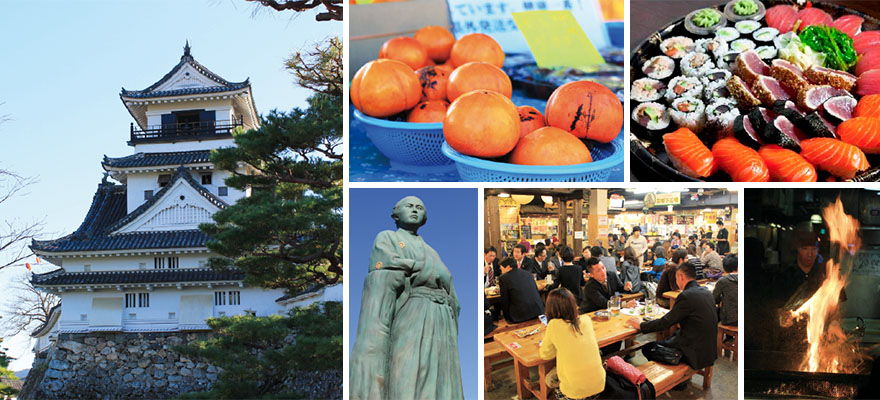Home > Highlighting JAPAN >Highlighting Japan January 2014>47 Prefectures from A to Y
Highlighting JAPAN
47 Prefectures from A to Y
Kochi
A Hearty Welcome

Japan's fourth-largest island of Shikoku lies just across the Seto Inland Sea from major centers such as Kobe, Okayama and Hiroshima. Spanning the entire lower half of Shikoku is Kochi, a prefecture blessed with an abundance of nature. With its long, beautiful Pacific coastline pressed against a backdrop of dramatic mountains, Kochi is home to the Shimanto River, one of Japan's few rivers unaltered by dams.Kochi is also famous as the birthplace of Ryōma Sakamoto, a samurai credited with bringing together the two feudal domains that would overthrow the Tokugawa shogunate in the late 1800s, ushering in the modern era of Meiji Japan.
Kochi is renowned for its hospitality and openness to strangers. This trait is often attributed to a unique part of Kochi culture known as okyaku, which originally referred to home parties organized by the wives of absent fishermen. To allow the hostess to join her guests in revelry, all the food was prepared on a single large plate for self-service – a practice known as sawachi cuisine. Yoshiro Uemura, head of the Tosa no Okyaku Planning Committee, explains that what was remarkable about okyaku was that age and social position presented no barriers to participation: "Even complete strangers passing by would be invited in to celebrate."
This tradition lives on today in birthday parties, weddings and other celebrations, but visitors can also experience it on a large scale at the Tosa no Okyaku Festival planned by Uemura's organization and held in early March each year. During the nine-day event, a kilometer-long shopping arcade in the center of Kochi City is converted into a massive drinking hall, where guests can sit outside the shops and enjoy food, music, dance and even Kochi's unique traditional drinking games.
Of course, Kochi's eateries keep the spirit of okyaku alive at any time of the year. Junko Nakano is the proprietress at Jun-ya restaurant near Kochi Station. After a delicious meal including Shimanto River seaweed and sukiyaki made with meat from former fighting cocks, Nakano delights in sharing local culture with visitors, even offering her guests a chance to try those notorious okyaku drinking games, which involve irregularly shaped shot glasses whose contents must be consumed before being set down. "After everyone was tired of eating, drinking and talking, these games were played to get everyone animated again," she explains.
Kochi's famed openness and hospitality may be most apparent at Hirome Ichiba, located just a short walk from Kochi Castle. This enclosed food court is distinguished by open-table seating that's perfect for sharing food, drinks and lively conversation. The locals are more than happy to point out their favorite dishes and make sure no one leaves without tasting Kochi's signature dish, katsuo no tataki – skipjack tuna that has been lightly seared over a hot flame, then sliced thinly and seasoned with sliced garlic. It can then be eaten with salt or a combination of soy sauce and vinegar.
Weekend visitors to Kochi City can also experience its sprawling Sunday Market. With a history dating back 300 years, the market features a weekly collection of booths offering everything from garden tools to handmade goods. A smaller, more intimate version can be found at the Kochi Organic Market held every Saturday in Ike Park, a scenic 40-minute bus ride south of the city. While organic vegetables feature prominently, shoppers can also find organic coffee, clothing made from organic cotton, and many other natural foods and crafts.
With bountiful nature, fresh food and a tradition of providing a hearty welcome, visitors to Kochi will soon find themselves wanting to extend their stay.
© 2009 Cabinet Office, Government of Japan






